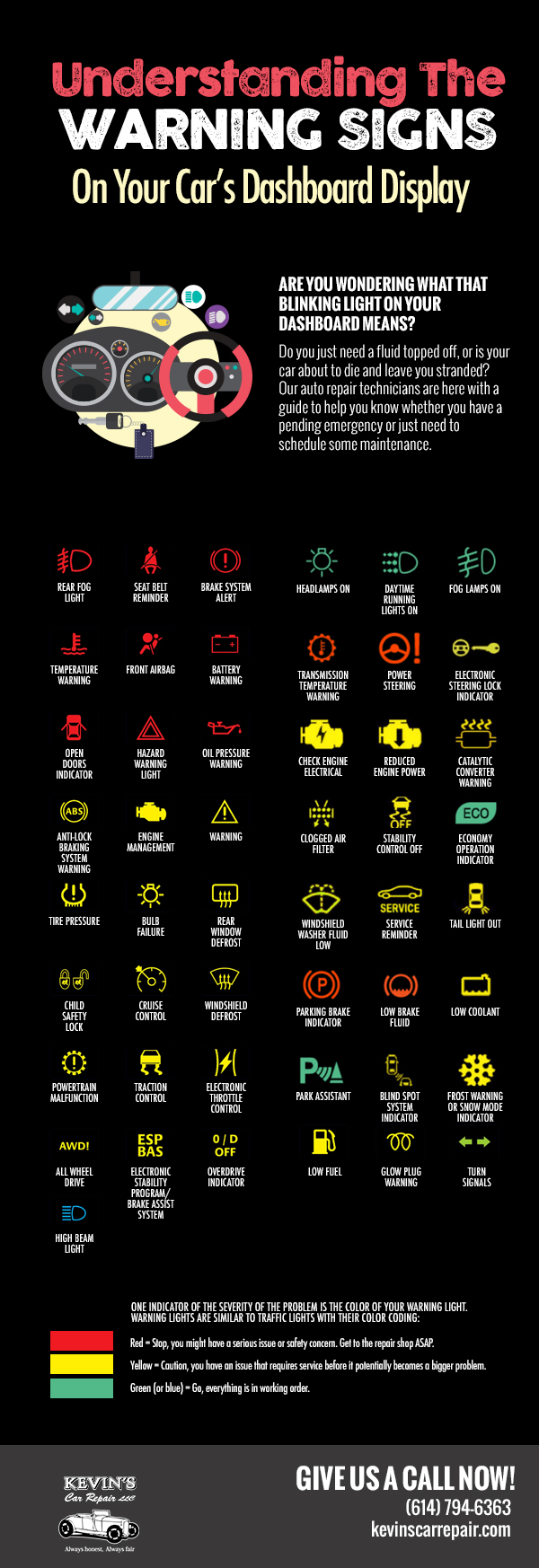Analyzing Your Car'S Caution Indicators: What They Really Share
Analyzing Your Car'S Caution Indicators: What They Really Share
Blog Article
Article Writer-Faulkner Torres
When you lag the wheel, those beautiful caution lights on your control panel can be a little bit puzzling. Do you understand what they're attempting to tell you concerning your vehicle's health and wellness? Understanding the importance of these lights is important for your safety and the long life of your vehicle. So, the next time one of those lights turns up, would not you wish to decode its message properly and take the essential actions to address it?
Common Caution Lighting and Interpretations
Recognize common warning lights in your car and comprehend their significances to guarantee secure driving.
One of the most regular caution lights include the check engine light, which signals problems with the engine or emissions system. If this light comes on, it's crucial to have your automobile checked immediately.
The oil stress warning light suggests low oil pressure, calling for immediate focus to stop engine damages.
A blinking battery light could recommend a malfunctioning charging system, potentially leaving you stranded otherwise resolved.
The tire pressure tracking system (TPMS) light alerts you to low tire stress, influencing car security and gas effectiveness. Overlooking this can lead to hazardous driving conditions.
The abdominal light shows a trouble with the anti-lock braking system, jeopardizing your ability to stop quickly in emergencies.
Last but not least, the coolant temperature warning light warns of engine overheating, which can lead to severe damage if not fixed swiftly.
Understanding these common warning lights will help you attend to issues without delay and keep safe driving problems.
Significance of Prompt Interest
Comprehending the common caution lights in your vehicle is just the primary step; the relevance of quickly addressing these warnings can't be emphasized enough to guarantee your security when driving.
When a caution light brightens on your control panel, it's your cars and truck's means of interacting a potential concern that requires focus. Disregarding these warnings can cause more severe issues in the future, endangering your safety and security and possibly costing you much more out of commission.
Trigger interest to advising lights can avoid break downs and accidents. For instance, a flashing check engine light could indicate a misfire that, if left neglected, could create damage to the catalytic converter. Resolving this immediately can save you from a pricey fixing.
In a similar way, a brake system advising light may signify reduced brake fluid or used brake pads, critical parts for your safety when driving.
Do It Yourself Troubleshooting Tips
If you discover a caution light on your control panel, there are a few DIY troubleshooting pointers you can try before seeking specialist assistance.
The initial step is to consult your automobile's handbook to understand what the specific caution light suggests. Often the issue can be as easy as a loose gas cap setting off the check engine light. Tightening up the gas cap might settle the trouble.
https://www.justice.gov/usao-ma/pr/former-boston-police-auto-repair-technician-sentenced-wire-fraud-charges is a reduced battery, which can trigger different alerting lights. Examining the battery links for deterioration and guaranteeing they're safe could fix the problem.
If a warning light lingers, you can try resetting it by disconnecting the cars and truck's battery for a couple of mins and afterwards reconnecting it. Furthermore, checking your lorry's fluid levels, such as oil, coolant, and brake liquid, can help troubleshoot warning lights associated with these systems.
Conclusion
To conclude, understanding your auto's caution lights is necessary for keeping your automobile running smoothly and securely. By promptly dealing with these informs and recognizing what they mean, you can avoid costly fixings and possible breakdowns.
Remember to consult click here for info for certain details on each warning light and act appropriately to make certain a trouble-free driving experience.
Keep informed, stay safe when driving!
